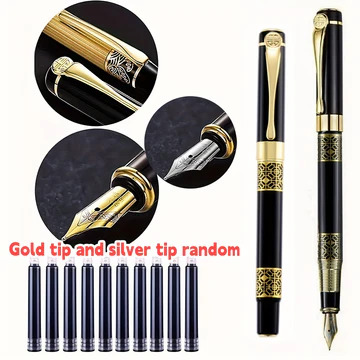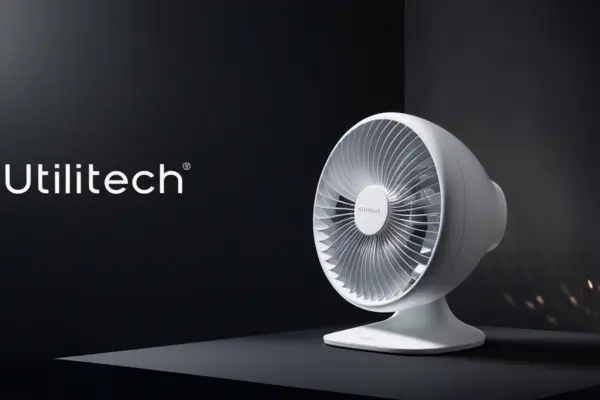
Fountain pens have long been regarded as elegant and stylish writing instruments. For many, they represent sophistication and tradition. While ballpoint pens are widely available and convenient, fountain pens offer a unique and refined writing experience that sets them apart. In this article, we’ll explore why fountain pens are better than ballpoint pens, covering everything from their history and types to the specific benefits they bring to your everyday writing.
The Allure of Fountain Pens
The simple act of putting pen to paper feels different when you use a fountain pen. There’s something about the smooth flow of ink, the weight of the pen in your hand, and the elegance of the script that makes writing a pleasure rather than a chore. In an age dominated by quick, disposable ballpoint pens, fountain pens stand out for their style, precision, and personal touch.
Ballpoint pens are practical, and we’ve all used them. They’re cheap, they don’t leak much, and they’re reliable. However, if you’re someone who values the art of writing or enjoys journaling, calligraphy, or even signing documents with a touch of flair, a fountain pen might just be the upgrade you need.
Why Choose a Fountain Pen?
So, why choose a fountain pen over a ballpoint? It comes down to a few important reasons.
- Writing Comfort: One of the biggest benefits of using a fountain pen is that it requires less pressure to write. Unlike ballpoint pens, which depend on you pressing the pen down to release ink, fountain pens allow the ink to flow naturally. This leads to a smoother, more comfortable writing experience—especially for those who write for long periods of time.
- Refinement and Aesthetics: Fountain pens are often beautifully designed, with sleek bodies made from materials like metal, resin, or even wood. They add a touch of class to your desk and can become an extension of your personal style.
- Environmentally Friendly: Fountain pens are much more sustainable than ballpoint pens. Instead of throwing away a pen when it runs out of ink, you can simply refill a fountain pen, reducing plastic waste. Plus, many fountain pens are built to last a lifetime, making them a great investment.
- Customizable: Unlike ballpoints, fountain pens come with different nib sizes and materials. Whether you prefer a fine or broad stroke, a fountain pen can be tailored to your writing style.
- Ink Variety: Fountain pens allow you to experiment with different types and colors of ink. From traditional black and blue to vibrant hues and shimmering inks, there’s no limit to how you can customize your writing.
Different Types of Fountain Pens
Fountain pens come in various shapes and sizes, and understanding the differences will help you choose the right one for your needs.
- Cartridge Fountain Pens: These pens use pre-filled ink cartridges that can be easily replaced. They’re convenient for beginners, as there’s no mess involved. Once a cartridge runs out, you simply pop in a new one.
- Converter Fountain Pens: These pens allow you to use a converter, which lets you fill your pen with bottled ink instead of using cartridges. This gives you access to a wider range of ink colors and brands, and it’s a bit more environmentally friendly since you’re not constantly throwing away cartridges.
- Piston-Fill Fountain Pens: Piston-filling pens don’t use cartridges or converters. Instead, they have an internal mechanism that draws ink directly into the barrel from a bottle. These pens usually hold more ink than other types, making them ideal for heavy writers.
- Eyedropper Fountain Pens: In these pens, ink is dropped directly into the barrel. Eyedropper pens can hold a large amount of ink, but filling them can be a bit messier than other types. However, they offer a great writing experience and often have a longer lifespan between refills.
Benefits of Using a Fountain Pen
Fountain pens offer numerous benefits, making them a superior choice for many over ballpoint pens.
- Improved Handwriting: Since fountain pens don’t require you to press down hard while writing, they allow for a more fluid motion. This can lead to better handwriting, as the ink flows smoothly and evenly across the page.
- Less Hand Fatigue: Writing with a fountain pen is gentler on your hand and wrist. Whether you’re taking notes during a long meeting or writing in your journal for hours, the light touch required by a fountain pen helps prevent hand fatigue.
- Ink Flow: The ink from a fountain pen flows consistently, ensuring that your writing stays sharp and bold. With ballpoint pens, you might notice skips or uneven ink distribution, but fountain pens provide a much more reliable writing experience.
- Elegant Aesthetic: There’s no denying that fountain pens just look nicer. Their graceful design and ability to produce beautiful writing make them a pleasure to use. Many people also love the ritual of using a fountain pen—unscrewing the cap, refilling the ink, and taking care of the nib.
- Durability and Longevity: Unlike disposable ballpoint pens, a well-maintained fountain pen can last a lifetime. Many high-quality fountain pens are passed down through generations as family heirlooms, making them more than just a writing tool—they’re a keepsake.
Steps to Getting Started with a Fountain Pen
If you’re new to fountain pens, getting started might seem intimidating, but it’s easier than you think. Here’s how to begin:
- Choose Your Pen: Start with a beginner-friendly fountain pen. Many brands offer affordable, easy-to-use models perfect for those new to the world of fountain pens. Consider whether you want to use cartridges or bottled ink.
- Select Your Ink: Once you have a pen, the next step is choosing your ink. If you’re using cartridges, you’ll be limited to the colors and types available in cartridge form. However, if you’re using a converter or piston-fill pen, you can experiment with a variety of bottled inks.
- Write with the Right Angle: Writing with a fountain pen is slightly different from using a ballpoint. Hold the pen at a 45-degree angle and let the ink flow naturally, rather than pressing down hard on the paper. It might take a bit of practice to get the hang of it, but once you do, you’ll love the smooth, effortless writing.
- Clean and Maintain: Fountain pens require a bit of maintenance to keep them working well. Be sure to clean your pen regularly, especially if you’re switching between different inks. It’s usually as simple as flushing the nib with water.
Conclusion
At first glance, ballpoint pens seem more practical—they’re cheap, widely available, and disposable. However, once you experience the elegance and ease of a fountain pen, you might never go back. With their smooth ink flow, reduced hand fatigue, customizable nibs, and environmental benefits, fountain pens offer a superior writing experience. They’re more than just a tool—they turn writing into an art form.
Fountain pens may require a little more care and effort, but that’s part of their charm. They’re a statement of refinement and offer a writing experience that’s truly special. Whether you’re jotting down quick notes or drafting a heartfelt letter, a fountain pen elevates the moment.
FAQs
Are fountain pens hard to use?
Not at all! While they require a different technique than ballpoint pens, it’s easy to get the hang of writing with a fountain pen. Plus, many pens are designed for beginners, making the learning curve even smaller.
How do I maintain my fountain pen?
Regular cleaning is important, especially if you use different types of ink. Simply flush the nib with water to keep it in good shape. More detailed maintenance might include disassembling the pen or using cleaning solutions, but that’s only necessary every few months or so.
Are fountain pens expensive?
While there are high-end fountain pens that can be costly, there are also many affordable options. Beginner fountain pens can be found for $20 or less, and they offer excellent quality.
Do fountain pens leak?
If properly maintained and used, fountain pens are no more prone to leaking than other types of pens. However, it’s a good idea to store them upright when not in use and avoid flying with them, as changes in air pressure can cause leaks.









